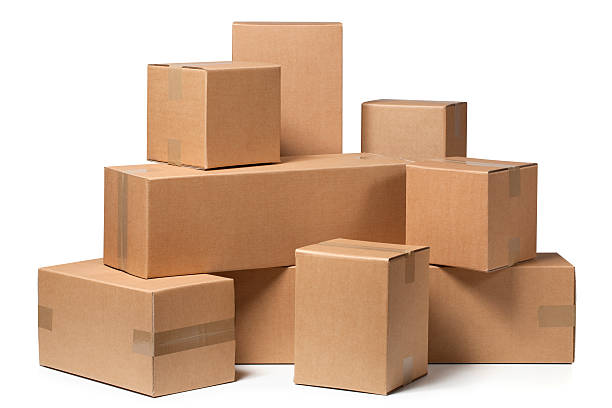Moving day can feel like an action movie—high stakes, last-minute surprises, and unexpected plot twists. But instead of starring in an action-packed disaster flick, you want a smooth, stress-free transition.
One of the biggest culprits behind moving-day chaos? Poor packing decisions.
A single mistake can lead to broken belongings, lost items, or even a moving day meltdown. To ensure your move doesn’t turn into a blockbuster catastrophe, let’s break down some of the most explosive packing mistakes—and how to avoid them!
Packing Mistakes That People Make
Not Decluttering Before Packing
Packing unnecessary items means more work, higher moving costs, and a cluttered new home. Imagine carrying junk you haven’t touched in years, only to toss it once you unpack. Before you even think about boxing things up, sort through your belongings and decide what to keep, donate, sell, or throw away. This will lighten your load and make unpacking a breeze.
Packing Fragile Items Incorrectly
Glassware, electronics, and delicate decor can crack or shatter if they’re not packed properly.
Use bubble wrap, packing paper, and soft materials like towels or clothing to protect breakables. Place fragile items in double-walled boxes, and clearly mark them as “FRAGILE” so local movers handle them with care.
Forgetting to Secure Liquids
Cleaning supplies, toiletries, or kitchen liquids can leak, ruining other items in the same box. Imagine opening a box of books only to find them soaked in shampoo. Place liquids in sealed plastic bags before packing them in boxes. Store them upright and label them clearly. For extra protection, use plastic containers instead of cardboard.
Assuming Movers Will Pack for You
Some moving companies offer packing services, but many don’t. If you’re not prepared, you could end up scrambling at the last minute. Clarify with your moving company if they provide packing assistance. If not, ensure everything is packed and ready before they arrive.
Packing Hazardous Materials
Propane tanks, fireworks, and aerosol cans can explode under pressure or temperature changes, creating a dangerous situation. Many moving companies will not transport these items for safety reasons. Check your mover’s list of prohibited items. Properly dispose of hazardous materials or transport them separately in compliance with safety guidelines.
Not Packing an Essentials Box
After a long day of moving, you need your toothbrush, chargers, medications, and a change of clothes—but you have no idea where they are. Pack a “first-night” essentials box with items you’ll need immediately. Include toiletries, a phone charger, snacks, important documents, and a change of clothes.
Waiting Until the Last Minute to Pack
Rushed packing leads to poorly organized boxes, forgotten items, and a stressful moving day. Start packing at least two weeks in advance. Begin with non-essential items and work your way up to daily-use items. Create a packing schedule to stay on track.
Mistakes People Make With Moving Boxes
Using the Wrong Boxes
Weak boxes can collapse under weight, leading to broken valuables. Boxes that are too large can be impossible to lift, increasing the risk of injury. Use sturdy, high-quality moving boxes. Label them according to weight capacity, and avoid overpacking large boxes. For heavy items like books, opt for smaller boxes to keep them manageable.
Overpacking Boxes
A box that’s too heavy can break, injure the person carrying it, or damage the items inside. Stick to weight limits—typically no more than 50 lbs per box. Distribute weight evenly and reinforce heavy boxes with packing tape.
Leaving Empty Space in Boxes
Items can shift and move inside partially packed boxes, increasing the risk of damage. To prevent movement, fill empty spaces with packing paper, towels, or clothing. Secure items snugly so they stay in place during transit.
Not Taping Boxes Securely
A box that isn’t properly sealed can open mid-move, spilling its contents everywhere. Use high-quality packing tape and reinforce box bottoms with extra layers. Avoid using weak or old tape that may peel off easily.
Not Labeling Your Boxes
As you reach your new home, you’re greeted by a sea of identical boxes, leaving you clueless about the location of your belongings. Essential items tend to vanish, making unpacking feel like a treasure hunt. Clearly label each box with its contents and the corresponding room. Employ color-coded labels or a numbering system to simplify organization further. Additionally, consider jotting down key items within the box for quick access.
Failing to Take Inventory
If a box goes missing, you may not realize it until days later. You may also struggle to locate specific items. To prevent this, create a moving inventory list with a numbering system for your boxes. This will make tracking easier and ensure nothing gets lost.
Final Thoughts: Pack Smart, Move Stress-Free
Avoiding these common packing mistakes can mean the difference between a seamless move and a chaotic one. With a little planning, organization, and the right packing techniques, you can ensure your move is action-packed—but in the best way possible!




